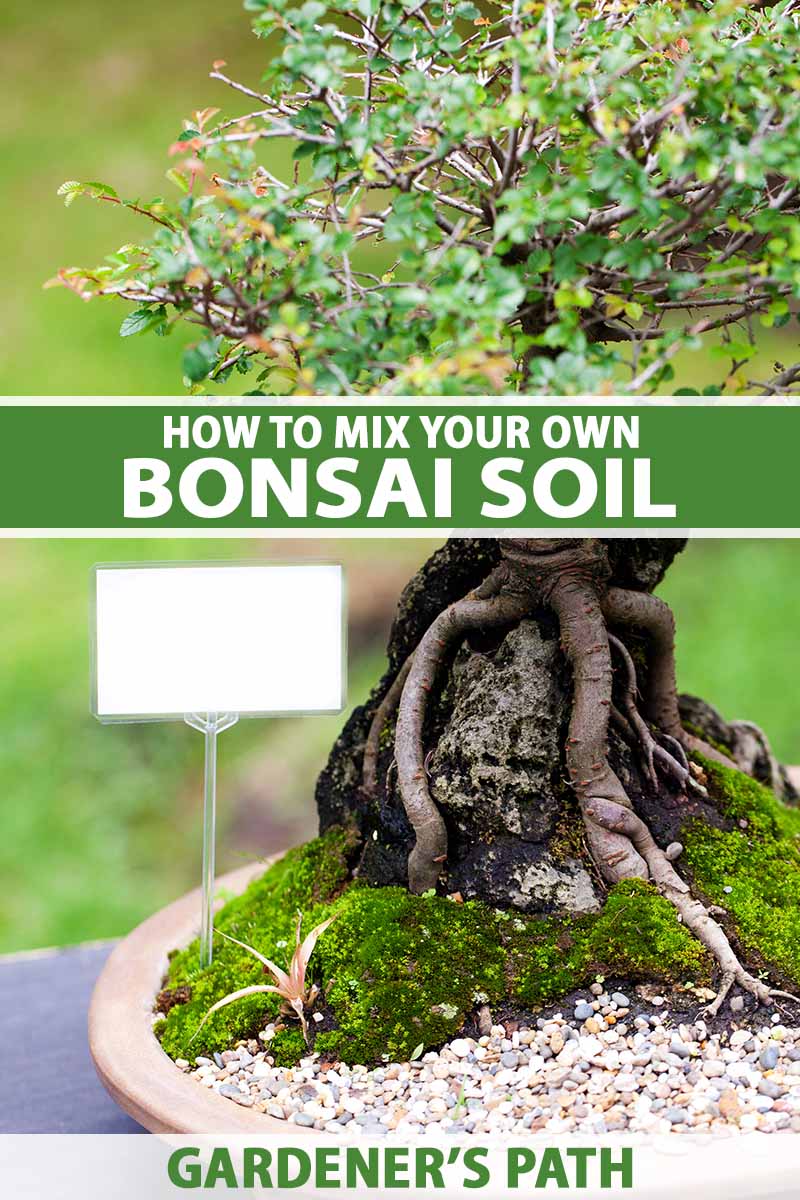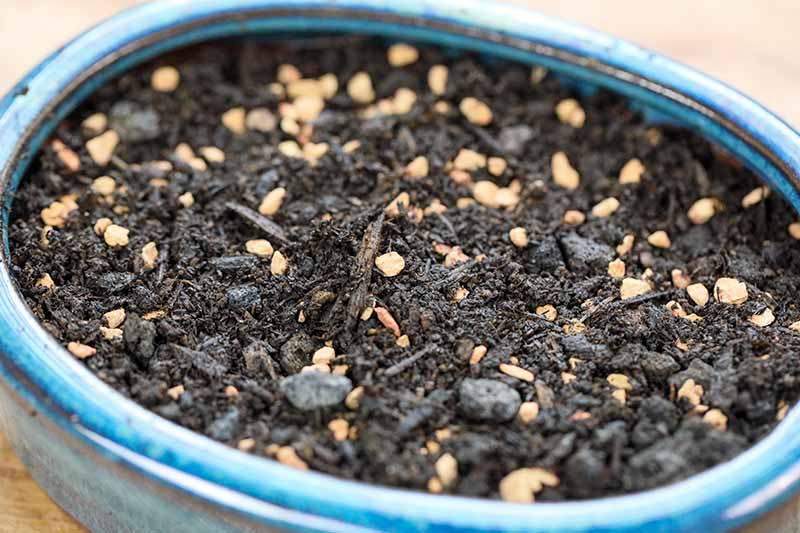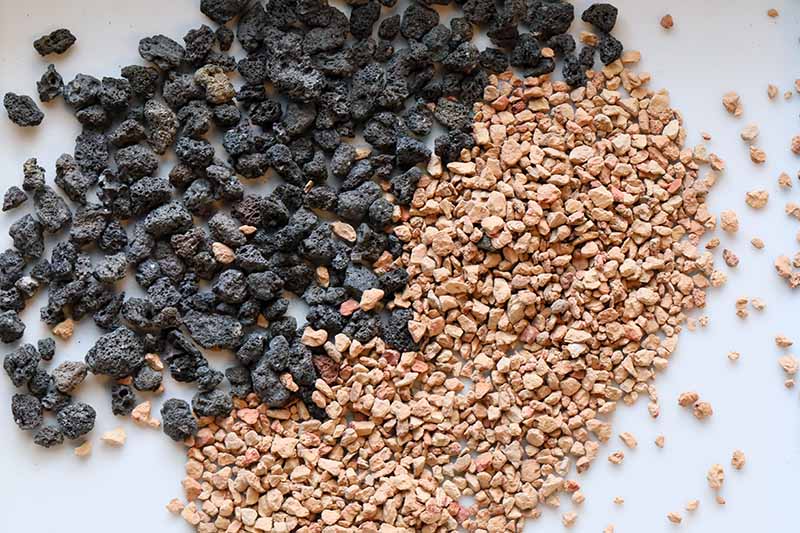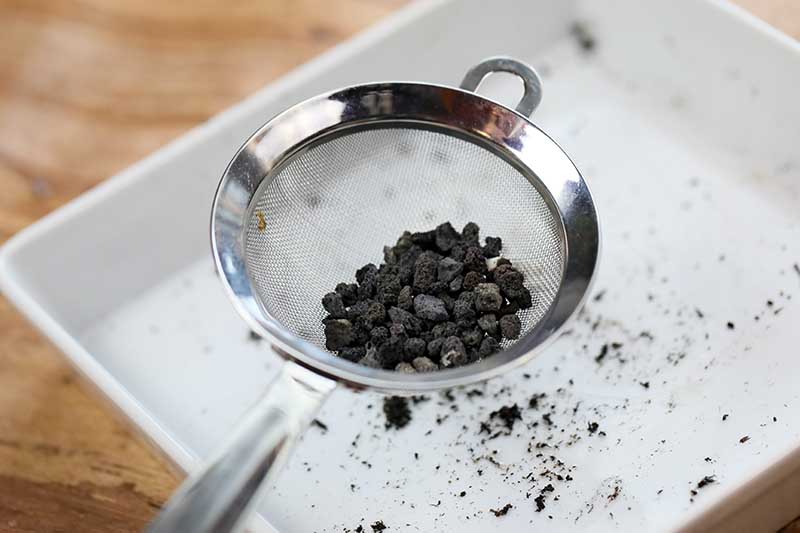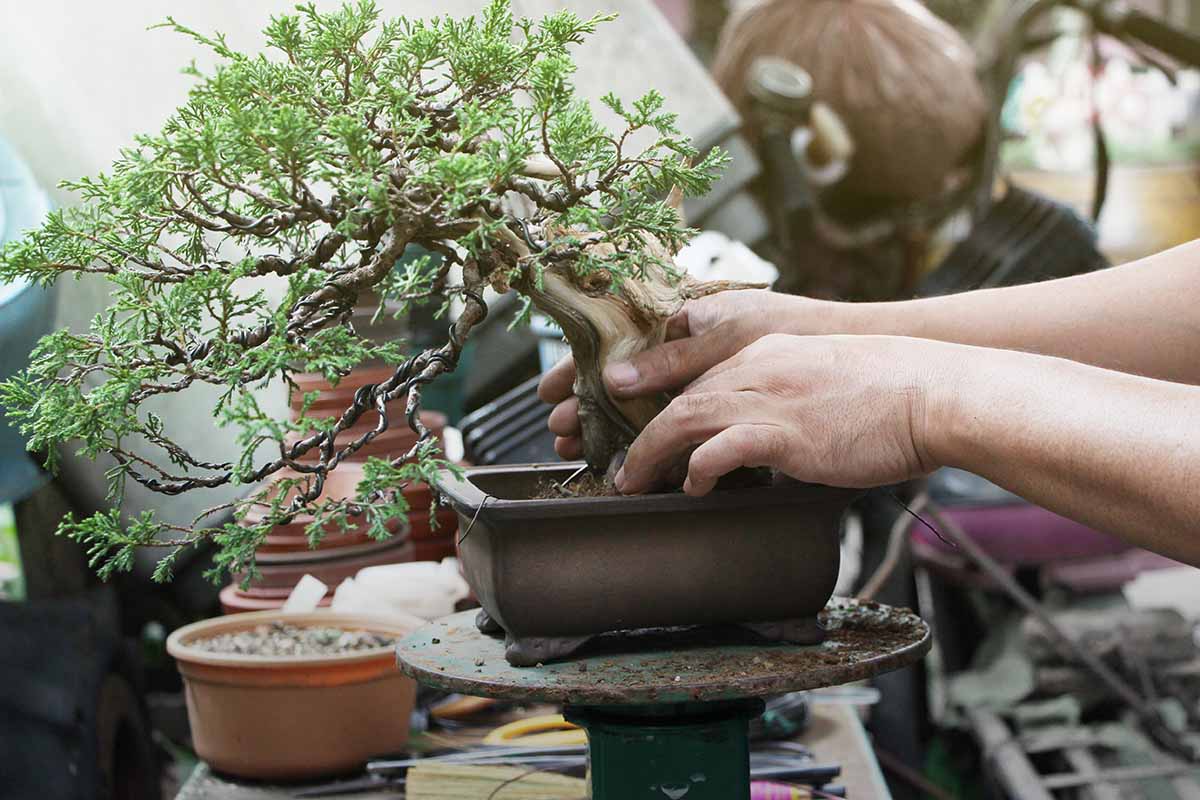But it’s particularly essential to get it right when growing bonsai. Because there is so little of it in the pot, there is hardly any room for error. It’s incredibly easy to overwater or underwater your plant, and soil is what makes the difference in providing the right amount. It also contains the nutrients your plant needs to survive. In other words, the wrong combination in your substrate can kill your beloved plant through malnourishment and over- or underwatering. We link to vendors to help you find relevant products. If you buy from one of our links, we may earn a commission. If you want to give your precious plant the right conditions to thrive, here’s what you can expect to discover in the upcoming guide: Growing a bonsai is a fulfilling achievement, even more so when you mix the substrate yourself. If you’re ready to get your hands dirty, here we go!
What Is Bonsai Soil?
Before we jump in, it’s important to understand the purpose of the soil. Not only does it anchor the plant, but it holds water and nutrients too. At the same time, it needs to be light enough that oxygen can reach the roots. And it also provides a buffer against the extremes of changing temperatures and moisture levels. The average garden soil is 50 percent solid, 25 percent water, and 25 percent air by volume. But the earth in the garden is too dense for the needs of bonsai, as is most potting soil. Plus, garden soil hardens over time. That’s why we need to make our own that is formulated just for bonsai! Bonsai soil might not contain any actual soil at all, so most experts refer to it as a substrate instead. The type of substrate you need to create will vary depending on the species of plant you’re growing. But regardless, it needs to offer three key elements: drainage, water retention, and aeration. To balance these elements, a substrate will contain organic and inorganic materials. Inorganic materials in this sense are things like grit, clay, and rock. Organic materials are decaying plant matter, usually in the form of compost or bark. Combined, these create a foundation that will hold some water but will still drain, and will allow air to reach the roots of the plant. Not every plant has the exact same needs, however. It’s important to know your species and its specific requirements. For instance, tropical plants require a substrate with better water retention, while conifers need less. Many people assume having drainage holes in the container that they choose will take care of any drainage concerns, but that’s only part of the equation. Any substrate that retains too much water will hold onto that moisture for too long, despite the drainage holes. Akadama is a clay-like mineral made out of volcanic soil mined in Japan. Turface, on the other hand, is clay that is heated to 1500°F to create what is known as calcined clay. You can buy it at many retailers online. For instance, Bonsai Boy carries quart-size bags of akadama. Akadama If you can’t find it or don’t want to use it, look for any sort of clay made for use in potting soil. Akadama or Turface are the most commonly used products. Both products improve drainage and help the soil retain moisture. As an alternative, you can use any sort of horticultural clay. When we say clay, we don’t mean the type that you can dig up out of your yard. You never want to use earth from the ground to grow your bonsai. Next, you need some kind of rock, typically volcanic rock like lava or pumice. These improve the porosity of the soil, which makes the soil lighter and makes it easier for oxygen to reach the roots. Some sort of grit, like coarse river sand or crushed granite, in addition to or instead of rock, is also useful. I prefer volcanic rock, but feel free to experiment. Large pieces improve drainage and aeration. Finally, you need well-rotted compost as a base. If you have a compost pile, great. Otherwise, you can buy general-purpose compost made from some combination of peat, plant waste, bark, and other ingredients. You can also add a small amount of rice hulls or coconut fiber to improve drainage and water retention. This is particularly useful if you live in a humid or rainy area.
Mixtures
For evergreen conifers, use about half clay in your substrate. The other half should be a mix of rock and compost. For deciduous trees, use 10 percent more clay and 10 percent less compost. Tropical plants need something closer to equal parts clay, rock, and compost. You don’t want to use too much super-fine material because root hairs can’t grow in a fine substrate, and larger roots can’t access enough oxygen. Before you mix your materials, sift all of them – minus the compost – through a flour sieve to get rid of the fine dust. Do not put a layer of gravel at the base of the pot. Not only does this decrease root space, the water sits at the level between the substrate and the gravel because of surface tension and capillary action, and this makes it much easier to overwater and suffocate your plant.
Using Your Substrate
Once you have your materials and you’ve sifted them, combine them in the recommended proportions in a large bowl. Now it’s ready to hold your plant. Any time when you dig up a plant or purchase one at a nursery, you’ll need to repot it in your homemade mixture. You’ll also need to remove some of the old substrate and add new stuff every year or so. That’s because the organic materials will break down over time and make it harder for the plant’s roots to access oxygen. Now that you have a better understanding of the unique needs of bonsai and how to create the right foundation for them, what will you grow? We’d love to hear about how your beauties are doing in their new homes, and pictures are always welcome! Leave both in the comments section below. While you’re at it, if you want to continue with your bonsai journey, we have a few other guides that you might find helpful, including:
How to Get Started with Your First Bonsai TreeAn Intro to Bonsai Trees: Information for the BeginnerHow to Grow and Train Dracaena Plants as Bonsai
